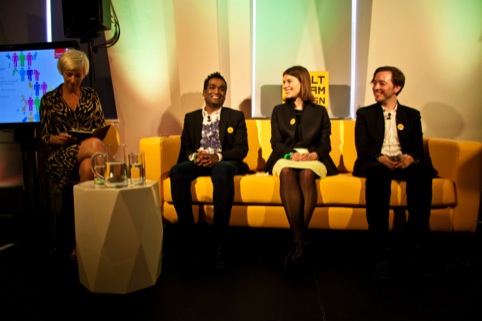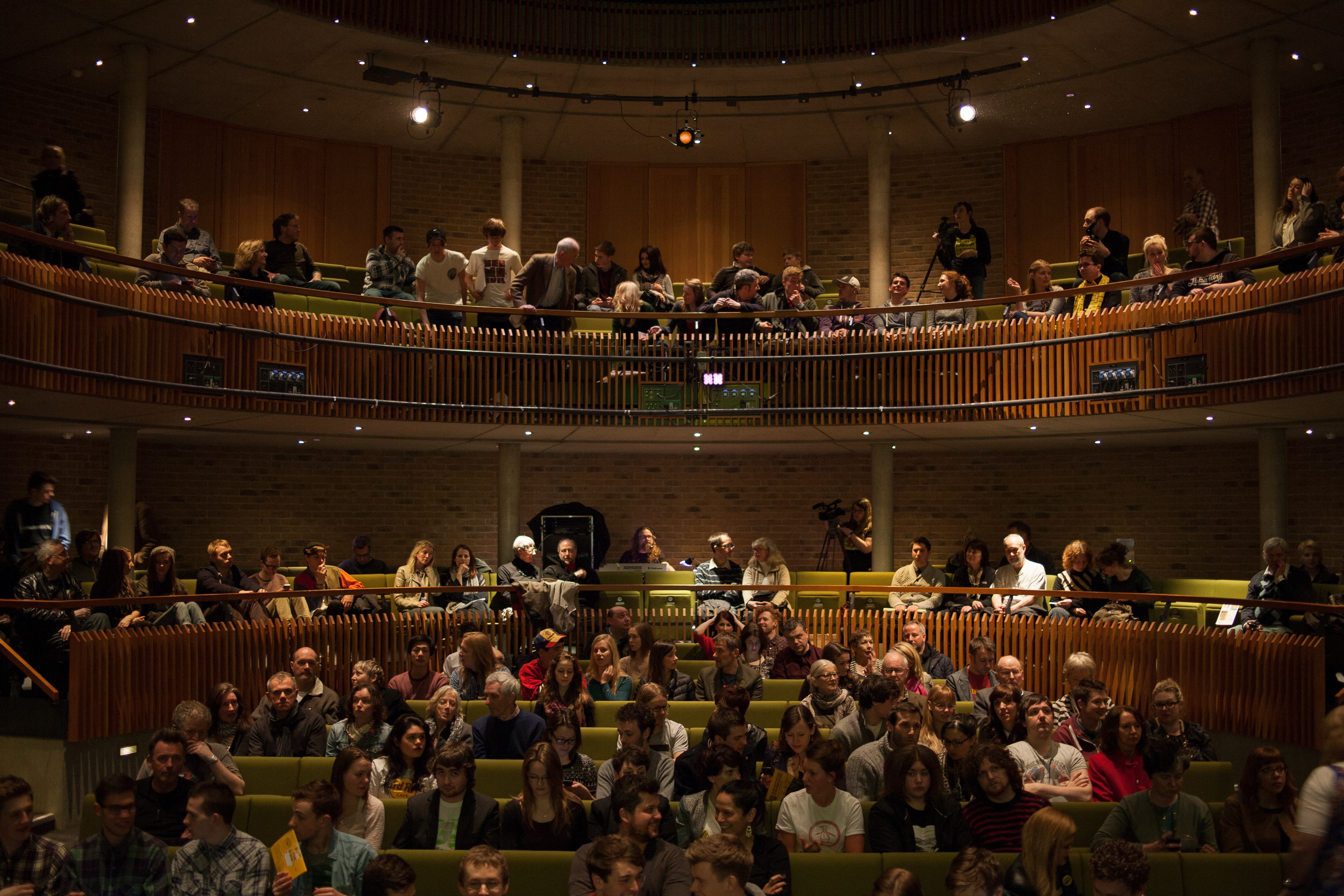Cheltenham Design Festival asks Who Cares About The Future of Design?
Last weekend the leafy Cotswold spa town of Cheltenham hosted its four-day Design Festival, with some huge headline names, and asked of them, Who cares about the future of design?

Source: Sean Delahay
Design Week dropped in on the event, which brought in the likes of Sir John Sorrell, Aston Martin, Wayne Hemingway, Neville Brody, Sir Christopher Frayling, Fred Deakin, The V&A, The Design Museum… we could go on.
Who cares? is a big question and was met vociferously by speakers who approached it through variously, social and inclusive, sustainable, educational, economic, and aesthetic perspectives, but always with the subtext it seems, that we care about design if it improves people’s lives.
The Aging Better by Design session talk was put together by the Design Council and asked ‘Are today’s designers really meeting the needs of an ageing population?’

Source: Sean Delahay
The Aging Better by Design Panel
No, was the answer. Chair of the West of England Design Forum Emma Collins joined deputy director of the Helen Hamlyn Centre for Design Rama Gheerawo, the brilliantly titled director of technology and magic at Vitamins Adrian Westaway, and head of policy on ageing Camilla Buchanan.
We were alerted to various shortcomings across the industry, particularly in product design, where older people are being failed repeatedly, through bathroom and kitchen aids, mobile phones and furniture.
With the number of people over the age of 85 set to double between 2010 and 2030 in the UK, which currently sees the over 60s spend £250bn annually compared with a measly £62bn by the under 30s, there is both the need and the desire.
Vitamins Design, which has recently been lauded for its collapsible wheelchair wheel has worked on an innovative project with Samsung called Out of The Box.
Westaway talked an audience through an identifiable problem for many older people who experience difficulties with setting up and using mobile phones, largely due to impenetrable instruction tomes.
He began by introducing some on-the-market “special phones”, which range from the patronising to the laughable, all dumbed down and missing key functions – in several cases a full set of numbers.
Taking the stance that it’s not the phones that need to change but the way we learn how to use them, Vitamins made this:
Video:
Out of The Box by Vitamins for Samsung
We also caught landscape architect Kim Wilkie’s talk Led by The Land, which looked to give an insight into ‘tomorrow’s landscapes’
In the light of political, economic and environmental uncertainty, Wilkie spoke of how ‘producing perishable food within the metropolis’ is both necessary and possible.
He introduced a series of projects including the V&A Courtyard and some Transylvanian landscapes he had worked on where ‘a design continuum – or conversation with past, present and future’ is intrinsic.
With an emphasis on people, land, water and climate Wilkie, who tries to engage with the memories and associations of a place, explained how ‘memories and natural forces might shape the landscapes of the future.’

Source: Daniel Day
Later An Audience with Sir John Sorrell, chariman of the London Design Festival and UK Business Amabasador, saw Sorrell talk about his belief that we are at the dawn of an age of creativity with nations increasingly turning to creativity to achieve growth.
There was also time to drop in on the Aston Martin – under the bonnet talk, which may seem frivolous when searching for the Who Cares magnum opus, but gave a stunning insight into the car manufacturer’s search for perfection.
Aston Martin Design Director Marek Reichman and director of product development Ian Minards were on hand to talk an audience through the current range of cars.
At the heart of a staggeringly small design team – where there are just seven designers – a product committee of three people oversee all new designs.
The manufacturer is celebrating its hundredth anniversary, during which time 60,000 Aston Martins have been made, over 90 per cent of which are still in existence according to Reichman.
While the event advertised ‘tyre kickers welcome’ Reichman put paid to anyone after a free one. Just Daniel Craig and ‘a member of the Royal family’ get one he says.
And if it’s the Royal we’re thinking of then this chimes with an observation made by Gheerawo who pointed out the average age of a sports car buyer is 55, reminding us the importance of designing for an ageing population.
-
Post a comment




